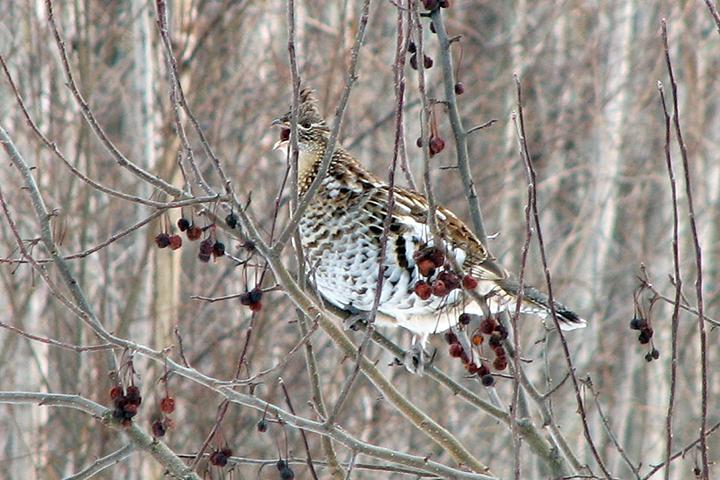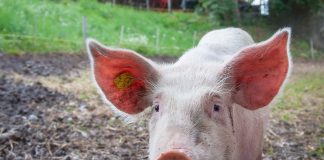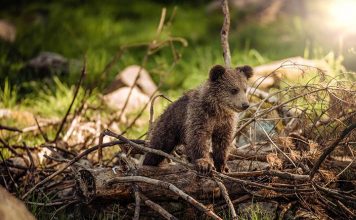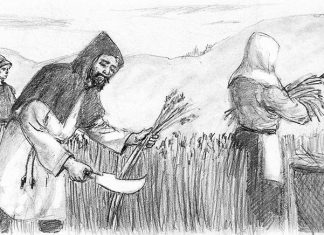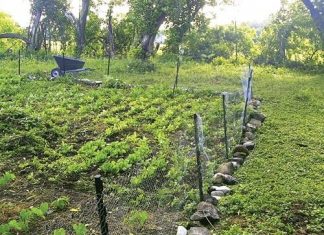By Linda Gabris |
 |
| Issue #83 • September/October, 2003 |
Nothing instills such excitement or makes my heart flutter louder than the sudden whir of a flushed out grouse. No matter how many times I’ve heard it, the whoosh of wings always comes as a thrilling surprise that startles the daylights out of me, like an electrical shock that I just can’t seem to get enough of.
I’ve been grouse hunting since I was old enough to tote a gun and, as much as I enjoy the pursuit of big game and waterfowl, I have to admit that grouse hunting ranks number one on my list of autumn outings, for not only is it a challenging sport but also a super long season. And best of all is the fact that having a stash of grouse in the freezer means great eating all winter long.
|
Although opinions will forever vary over what gun and ammo is the best pick for grouse, I think the number one thing for any upland bird hunter to consider is to make sure their choice is powerful enough to deliver a quick, clean killbut not so powerful that there’s nothin’ left of the prize but a mess of feathers.
Learning to hunt years ago with my dad in the hardwood stands behind our back stoop, I used an old 20-gauge shotgun which was handed down to me from my father. I lugged the trusty thing for years before retiring it as a keepsake of cherished memories of my younger days spent in the woodlands. I’ve been fortunate enough to try out a fair range of makes and models of shotguns over the past number of years, and I must say a 20-gauge is still a favorite pick.
Before I retrieve a gun from my vault for a day’s hunt, I consider the state of the woodlands I intend to trudge through. Early in the season when trees and shrubs are still heavily branched in leaves, I find that my 20-gauge with modified choke delivers plenty of spread, and No. 6 shot gives me the penetration for cutting through obstructions. Although it doesn’t take a ton of bricks to bring down a grouse, one has to consider the brush factor when hunting in early season and choose a shot that throws a wide pattern. In late season, when the trees are bare and I can keep my eye on the bird for further distances, I find No. 4 shot works well.
One of the trickiest things about grouse hunting is training your eyes to pick up the perfectly camouflaged forms of these plump birds. I remember when I was a kid how dad would tease me because I couldn’t distinguish a grouse up ahead on the trail from a clump of mud. Learning to spot them is like training your eyes to see stereoscopic images without using 3-D glasses. But once you develop the skill, the image seems to register quickly without strain or over-focusing. Being able to spot the birds on the ground before they burst into air gives a little more time for planning action.
The best woodlands to hunt grouse are those that offer feed. There are numerous species of birds belonging to the grouse family, and although they are similar in character and habit they thrive on food that is available in their regions. The crops or ‘berry bags’ of downed birds will reveal their diet trends. Studying the contents carefully will help make future hunts more successful.
|
Those shot in hardwoods will contain berries and plants familiar on hardwood forest floors. Crops of prairie chickens will be filled with such delights as grain, goldenrod, sunflower, and other common seeds. Birds hunted in or near bogs will have telltale signs of cranberries or blueberries in their bags. Studies show that grouse eat buds and needles of evergreens in wintertime which is believed to help them digest food in place of stones that might be hard to obtain from frozen or snow covered ground. Since they need to fill their gizzards with stones in order to digest food, grouse are often spotted alongside gravelly paths or streams ‘mining’ in early morning and evening.
Deciduous stands and willowy scrubland, burned and logged areas that are rich in seedy growth, old orchards, clearings, and edges of forests are prospective places to tramp grouse hunting trails. I have found that any trek that winds through bunchberry, clover patches, or wild rose brushes laden with bright fleshy hips offers good chances of flushing out a plump ruffie or two.
Grouse hidden in the colorful depths of autumn are often scared up by the rustle of crispy foliage under the hunter’s foot. Drumming and a sudden whir are thrilling sounds that the grouse hunter must be ready to quickly react to. This reaction is known as “swinging-through” and consists of getting the gun moving faster than the bird. One’s instincts must work all at the same timehearing, then seeing, or vice versathe bird, swinging the gun, aiming while panning, then pulling the trigger at the precise moment. Grouse are fast flyers and can instantly burst into flight, skimming trees in a cunning, dodging manner, making a calculated shot the ultimate challenge.
Some grouse hunters enjoy the companionship and aid of a good bird dog which can stir up flocks of birds and are great at retrieving. If you’ve got a well trained grouser with a begging face that you just can’t refuse, then by all means let the devoted critter tag along. Or rather you tag along with him! Sometimes I adopt faithful Old Barney from my hunting buddy to take along on a stroll. Other times I go solo preferring a slower, more relaxed pace.
Next best thing to hunting grouse is eatin’ them. One thing that puzzles me is hearing tell of a grouse that was too tough to chew. I’ve never come across one yet that didn’t cut it as a great meal. Especially one dressed in a golden jacket of sweet wild hazelnuts picked from the same woods from whence the bird was harvested. Now this is the crowning glory of a great hunt.
Breast of grouse in hazelnut jackets
This is a very elegant dish to serve when you want to impress your hunting partner or a special dinner guest. The grouse breast is tender and succulent on the inside and crispy coated with distinctive sweet hazelnuts on the outside. This recipe serves two, but you can double it as long as you don’t crowd the pan.
|
1 grouse breast, de-boned (to de-bone a grouse breast, run a sharp knife down each side of the breastbone, working the meat away with your free hand. Slice each half into two thin fillets. Save bones for another day’s soup.)
¼ cup of ground wild hazelnuts. A few more if doing two birds. (You can substitute commercial filberts if you haven’t had a successful nut hunt)
½ cup of flour seasoned with pinch of salt, pepper, thyme, and a bit of sweet basil
1 egg
4 Tbsp. buttermilk or heavy cream
butter
Flatten grouse pieces by pounding gently with a mallet. Combine ground nuts and seasoned flour in a paper bag. Blend egg and buttermilk together. Dip grouse into egg mixture, then drop into paper bag and shake until coated. Place on a sheet of waxed paper and allow to dry for about 8 minutes or until nuts are adhered to the meat.
Melt butter and sauté the pieces until golden on both sides. Sprinkle with a few drops of fresh squeezed lemon juice. One breast serves two.
Goes great with a few fried mushrooms dipped and coated in any leftover batter and crumbs. Serve with a crisp green salad. Add wine and you’ve got it made.
(This article was previously published, in part, in BC Hunting and Shooting Magazine.)
Harvesting wild hazelnuts
|
|
The bark of mature plants is smooth and bright brown while immature twigs are lighter in color and covered in fuzz. The oval, double-toothed leaves have deep, well-spaced veins and are covered in silky hairs giving them a velvety feel. Immature twigs are lighter in color and covered in fuzz.
The shrubs have both male and female flowers that are separate but on the same bush. Male flowers are born in catkins that develop in fall and mature in spring. They dangle from bare branches shedding a shower of pollen on the female flowers that are tiny rusty clusters. In mid autumn the nuts ripen in sets of twos, sometimes threes, snuggled in fuzzy husks that turn from green to brown as they ripen.
One of the trickiest things about harvesting wild hazelnuts is to beat squirrels to the ready nuts. If you pick them too early the nut will not be developed and you’ll end up with a heap of empty shells. But if you wait too long, squirrels, who seem to know exactly when the nuts are ready, will hoard them up right under your nose. Best thing to do is hunt down a patch and keep a close eye on it. Cracking a nut with a stone will tell when they are fleshed out and prime for picking.
Make sure you throw a pair of gloves in your pack for gathering the nuts as the silvery husks are picky on the fingers.
|
Once home with your pickings, the nuts must be husked. If you want to use a handful of nuts immediately, peel off the husks using gloved hands. If you can wait a day or two before using, the sheaths will wilt and become easier to loosen and peel away. If you’ve found a good stash of nuts, they can be buried in mud for a week or two and the husks will rot off.
Hazelnuts can be cracked and eaten fresh or the kernels can be extracted from the shells and roasted in a moderate oven for about 8 minutes or until slightly brown. This gives them a sweeter, nuttier taste.
Shelled nuts should be stored in an airtight container. Unshelled nuts can be stored in a cool, dry place for years although they are so good I can’t imagine a stash ever lasting that long.
If you’re a huntin’ nut who likes to stash away a few treats for winter then you’ll love the addition of these tasty little nuts to your pantry.


